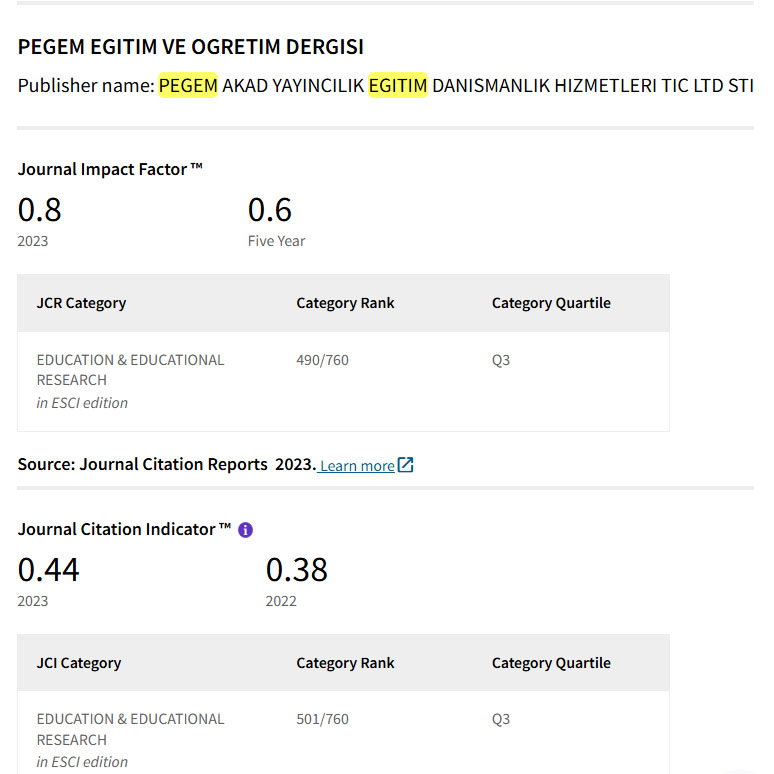The Role of Referential Cohesion in the Process of Text Comprehension
DOI:
https://doi.org/10.47750/pegegog.15.02.17%20Keywords:
Referential cohesion, reading comprehension, anaphoric reference, cataphoric reference, exophoric referenceAbstract
This study examines the relationship between middle school students' success in understanding referential cohesion devices and their reading comprehension skills and the extent to which these skills differ according to various demographic variables. The study involved 198 6th, 7th, and 8th grade students. Data was collected using a Personal Information Form, a Reading Comprehension Achievement Test, and a Referential Cohesion Test. According to the findings, understanding referential cohesion devices significantly predicts reading comprehension achievement. Participants were more successful in interpreting anaphoric and exophoric references than cataphoric ones. Female students demonstrated higher reading comprehension achievement than their male counterparts. Reading comprehension achievement also increased with grade level, and students who read books regularly exhibited higher reading comprehension. However, success in understanding referential cohesion did not significantly vary by gender, grade level, or reading frequency. These findings highlight the necessity of designing instructional practices to enhance referential processing skills.
Downloads
References
None
Downloads
Published
How to Cite
Issue
Section
License
Copyright (c) 2025 Pegem Journal of Education and Instruction

This work is licensed under a Creative Commons Attribution-NonCommercial 4.0 International License.
Attribution — You must give appropriate credit, provide a link to the license, and indicate if changes were made. You may do so in any reasonable manner, but not in any way that suggests the licensor endorses you or your use.
NonCommercial — You may not use the material for commercial purposes.
No additional restrictions — You may not apply legal terms or technological measures that legally restrict others from doing anything the license permits.



